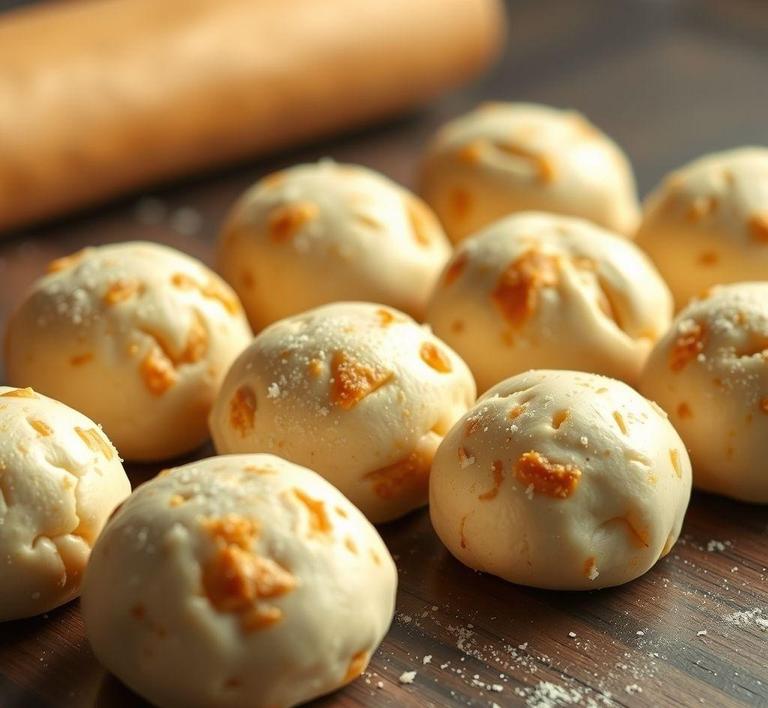So, you’ve made a batch of pizza dough and are wondering if you can refreeze those dough balls for later use? Well, you’re in the right place! Whether you’ve got a little too much dough or just want to be prepared for a pizza night down the road, freezing and refreezing pizza dough can be a real game-changer. In this guide, we’ll walk you through everything you need to know-how to store it properly, how long you can keep it, and of course, tips for making sure your dough still rises perfectly once it’s thawed. Let’s dive into the doughy goodness!
Can You Refreeze Pizza Dough Balls?

Yes, you can technically refreeze pizza dough balls, but it’s not always ideal. Pizza dough is a living, fermenting mixture of flour, water, yeast, and salt, which undergoes chemical and biological changes during proofing (the rising process). Once dough has been thawed and allowed to come to room temperature or start fermenting again, refreezing interrupts this natural process.
When you thaw frozen dough, yeast reactivates and fermentation resumes, producing carbon dioxide gas that causes the dough to rise and develop flavor. Refreezing the dough after thawing will halt fermentation abruptly and can stress the yeast cells. This can result in dough that may not rise as well the next time you use it, producing a denser, less airy crust.
However, if you’re dealing with leftover dough balls or you thawed more dough than you could use, refreezing is a practical option to avoid waste – especially if the dough has been handled safely and hasn’t sat out too long at room temperature.
Food safety is crucial: only refreeze dough that has been thawed in the refrigerator and kept cold. If dough has been left at room temperature for more than 2 hours, refreezing is unsafe due to potential bacterial growth.
How To Refreeze Pizza Dough Balls?
If you decide to refreeze pizza dough balls, doing it properly will help maintain the best possible quality and food safety.
-
Thawing Method Matters
Always thaw dough slowly in the refrigerator (typically 12-24 hours), not on the counter. This keeps yeast activity controlled and minimizes risk.
-
Refreeze While Cold
If you don’t use the dough after thawing, put it back in the freezer before it reaches room temperature. If the dough starts to rise again at room temp, it’s better to bake it or discard it rather than refreezing.
-
Wrap Carefully
Wrap the dough balls tightly in plastic wrap or place them in an airtight freezer bag. Removing as much air as possible reduces freezer burn and moisture loss.
-
Label and Date
Write the date on the packaging. Frozen dough generally lasts 3 months for best quality. Refreezing dough multiple times can cause cumulative damage, so keep track.
-
Thaw and Use Promptly
When ready to use, thaw again in the fridge and give the dough time to come to room temperature and proof properly before shaping and baking.
Quality Impact
Refreezing pizza dough balls inevitably impacts dough quality in several ways:
- Reduced Yeast Activity: Yeast cells weaken after repeated freezing/thawing cycles. This reduces dough’s rising power, leading to a denser, less fluffy crust.
- Texture Changes: Ice crystals formed during freezing rupture gluten strands in the dough. Refreezing increases this effect, making dough tougher or sometimes sticky when thawed.
- Flavor Deterioration: Extended time in the freezer can dull the fresh, yeasty aroma of dough. Refreezing interrupts fermentation, so flavor development slows or stalls.
- Moisture Loss: Freezer burn and moisture evaporation can dry out dough, leading to uneven hydration and difficulty in stretching the dough properly.
Despite these drawbacks, for many home cooks, refreezing dough is a convenient compromise between freshness and waste reduction. If you plan to bake the dough relatively soon after the second thaw and handle it gently, the quality loss can be minimized.
While you can refreeze pizza dough balls, it’s a practice best reserved for avoiding waste rather than preserving peak dough quality. Always prioritize food safety by only refreezing dough that’s been kept cold, and do so quickly before it reaches room temperature.
Refreezing dough interrupts yeast fermentation, weakens gluten structure, and can affect texture and flavor, resulting in a pizza crust that may be denser and less flavorful than dough frozen just once. However, with proper wrapping, labeling, and gentle handling, the quality impact can be kept manageable for casual home pizza making.
For the best pizza experience, plan your dough usage so that refreezing isn’t necessary, or consider portioning dough before freezing to avoid leftovers. But if you find yourself with extra dough that must be saved, refreezing is a practical option – just be mindful of the trade-offs.
Is It Safe To Refreeze Pizza Dough Balls?
The question of whether it’s safe to refreeze pizza dough balls is a common one for home cooks and pizza aficionados alike. The short answer is: it depends. Refreezing pizza dough can be safe, but it hinges on how the dough was handled before and after the initial freezing.
Pizza dough is made from flour, water, yeast, salt, and sometimes sugar or oil. The yeast in the dough is a living organism that ferments sugars, causing the dough to rise. When frozen, the yeast’s activity is slowed down dramatically but not completely stopped. When thawed, it wakes back up and begins fermenting again.
Here’s What Matters
- Thawing Conditions: If you thawed your dough in the refrigerator, it stays at a safe temperature (below 40°F/4°C), which minimizes bacterial growth. In this case, refreezing is generally safe.
- Time at Room Temperature: If the dough was left out too long at room temperature (above 40°F/4°C), it risks developing harmful bacteria. Refreezing under those circumstances is not safe.
- Dough Integrity: Freezing and thawing cause ice crystals to form and break down gluten structure somewhat. Each freeze-thaw cycle can degrade dough quality and elasticity, affecting rise and texture.
So, if your dough has been handled properly and thawed slowly in the fridge, refreezing is safe but may impact the texture. If it’s been left out too long or shows signs of spoilage, it should be discarded.
Signs That Pizza Dough Balls Should Not Be Refrozen
Knowing when not to refreeze pizza dough is just as important as knowing when it’s okay. Here are the telltale signs your dough has passed the point of safe refreezing:
- Off Smell: Fresh pizza dough has a mild, yeasty aroma. If it smells sour, rancid, or unpleasantly fermented (like alcohol or vinegar), that’s a warning sign of bacterial or yeast overgrowth.
- Discoloration: Dough should be a consistent pale beige or slightly yellowish color depending on flour. If you see dark spots, mold, or any unusual colors (green, black, pink), it’s a sign of spoilage or mold contamination.
- Sticky or Slimy Texture: Dough that feels overly sticky, slimy, or wet beyond normal hydration may be growing bacteria or yeast colonies, making it unsafe.
- Excessive Rise or Bubbling: If the dough has risen excessively and developed large bubbles or a foamy surface after thawing, it might be over-fermented. While not always dangerous, over-fermentation can reduce dough quality and increase spoilage risk.
- Left Out Too Long: If the dough has spent more than 2 hours at room temperature, or if you’re unsure of how long it’s been out, it’s safer to discard.
Common Refreezing Mistakes
Even seasoned home cooks sometimes stumble when handling frozen dough. Here are some common pitfalls that can spoil your pizza dough adventure:
- Refreezing Thawed Dough at Room Temperature: Never refreeze dough that’s been left out on the counter. It’s a breeding ground for harmful bacteria.
- Skipping Proper Wrapping: When refreezing, exposing dough to air can cause freezer burn and dry out the dough’s surface, leading to tough, crusty dough once thawed again.
- Ignoring Dough Condition: Refreezing dough that already smells off or shows signs of mold or discoloration only risks foodborne illness.
- Rapid Temperature Changes: Rapid thawing in a warm environment or refreezing immediately after dough feels warm can degrade yeast activity and dough structure.
- Overhandling Dough: Constant kneading and handling during thawing and refreezing weaken gluten networks and reduce dough elasticity, resulting in dense or crumbly crusts.
Tips And Tricks
Want to handle your pizza dough like a pro and safely refreeze without sacrificing quality? Here are some expert tips:
- Freeze in Individual Portions: Freeze dough balls separately on a tray before bagging. This way, you can thaw only what you need without exposing the rest to repeated temperature fluctuations.
- Use Airtight Containers or Bags: Wrap dough tightly in plastic wrap, then place it in a resealable freezer bag with the air squeezed out. Double protection prevents freezer burn.
- Label and Date: Always mark your dough with the date it was frozen. Use within 2-3 months for best flavor and texture.
- Thaw in the Refrigerator: Plan ahead and thaw dough in the fridge overnight or up to 24 hours. Slow thawing maintains yeast health and dough consistency.
- Give Dough Time to Warm Up Before Shaping: After fridge thawing, let your dough sit at room temperature for 30-60 minutes. This relaxes gluten and makes shaping easier.
- Don’t Overproof After Thawing: Once thawed, avoid letting dough rise too long at room temperature. Use it promptly to avoid over-fermentation.
- Consider a Preferment: To enhance flavor and yeast activity, you might refresh frozen dough with a short fermentation at room temperature before shaping.
Conclusion
Refreezing pizza dough balls is safe under the right conditions-primarily if the dough was thawed in the refrigerator and handled with care. However, improper thawing, exposure to warm temperatures, or signs of spoilage should be taken seriously to avoid health risks and disappointing results.
While refreezing dough is possible, each freeze-thaw cycle impacts the dough’s texture, elasticity, and flavor, so it’s best to freeze dough in small portions and thaw only what you need. Armed with the right knowledge and techniques, you can confidently manage your dough inventory, minimize waste, and continue crafting delicious, homemade pizzas with ease.


